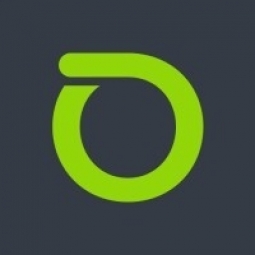下载PDF
Global Insurer Meets State Regulations for Secure Networks with NETSCOUT Cybersecurity Analytics
技术
- 网络安全和隐私 - 网络安全
- 基础设施即服务 (IaaS) - 云计算
适用行业
- 金融与保险
适用功能
- 商业运营
用例
- 网络安全
服务
- 网络安全服务
- 系统集成
挑战
该公司的安全运营 (SecOps) 团队面临着新的业务和合规性管理挑战,这些挑战超出了当前 IT 工具集的功能。纽约州政府已颁布要求,要求所有在纽约运营的企业实施网络安全措施、报告数据泄露、确定威胁是否超出了初始渗透点,并提供相关的网络数据包捕获,作为有效取证安全分析的进一步证据,用于成功排除漏洞。该公司必须在加速的时间内部署完整的解决方案,以满足州政府规定的组织合规期限;否则,该企业将受到政府罚款并对品牌声誉产生不利影响。作为战略业务计划的一部分,该公司决定将某些数据中心工作负载转移到基于云的 Amazon Web Services (AWS) 和 Microsoft Azure (Azure) 平台以及新增加的 Equinix 主机托管设施。然而,当 Equinix 主机托管设施报告 Azure 服务中断时,CISO 了解到该公司现有的 IT 工具集缺乏对这种新的混合云环境的可见性,而这种可见性对于排除故障和修复性能异常是必需的,因此无法为客户和用户快速恢复业务服务。
关于客户
这家国际保险和金融服务公司是市场领导者,为 900 万客户管理着超过 5000 亿美元的资产。该公司为个人、家庭和企业提供广泛的金融和福利计划解决方案。他们提供各种退休储蓄和收入计划,以及人寿、残疾和重大疾病保险。
解决方案
该公司正在通过利用 NETSCOUT nGeniusONE 服务保障平台来解决其在美国业务运营中出现的安全、合规、服务保障和云监控挑战。在最初应对该州的安全合规挑战时,SecOps 团队安装了 InfiniStreamNG (ISNG) 设备技术,以获得他们所缺乏的对进出数据中心环境的网络应用程序流量的可视性。ISNG 使用集成的 NETSCOUT 自适应服务智能 (ASI) 技术将公司的基于数据包的流量转换为智能数据,nGeniusONE 的性能分析使用此元数据来提供确保安全性和管理业务服务性能所需的实时可视性。 SecOps 团队利用 nGeniusONE 上下文深入分析服务仪表板和服务监控视图中的相应特定会话级分析、梯形图,以及逐跳事务分析来帮助识别特定问题,并基于初始 nGeniusONE 工作流程进行与当前问题相关的数据包级分析和取证证据收集,从而简化了与州政府的证据合规流程。此外,SecOps 团队现在正在获得对整个 Azure 和 AWS 平台上的公司工作负载的关键可见性,nGeniusONE 使用安装在 Equinix 主机托管服务器上的 ISNG 技术和 ASI 生成的智能数据来主动监控在此混合云环境中运行的业务服务。
运营影响
相关案例.

Case Study
Real-time In-vehicle Monitoring
The telematic solution provides this vital premium-adjusting information. The solution also helps detect and deter vehicle or trailer theft – as soon as a theft occurs, monitoring personnel can alert the appropriate authorities, providing an exact location.“With more and more insurance companies and major fleet operators interested in monitoring driver behaviour on the grounds of road safety, efficient logistics and costs, the market for this type of device and associated e-business services is growing rapidly within Italy and the rest of Europe,” says Franco.“The insurance companies are especially interested in the pay-per-use and pay-as-you-drive applications while other organisations employ the technology for road user charging.”“One million vehicles in Italy currently carry such devices and forecasts indicate that the European market will increase tenfold by 2014.However, for our technology to work effectively, we needed a highly reliable wireless data network to carry the information between the vehicles and monitoring stations.”

Case Study
Safety First with Folksam
The competitiveness of the car insurance market is driving UBI growth as a means for insurance companies to differentiate their customer propositions as well as improving operational efficiency. An insurance model - usage-based insurance ("UBI") - offers possibilities for insurers to do more efficient market segmentation and accurate risk assessment and pricing. Insurers require an IoT solution for the purpose of data collection and performance analysis

Case Study
Smooth Transition to Energy Savings
The building was equipped with four end-of-life Trane water cooled chillers, located in the basement. Johnson Controls installed four York water cooled centrifugal chillers with unit mounted variable speed drives and a total installed cooling capacity of 6,8 MW. Each chiller has a capacity of 1,6 MW (variable to 1.9MW depending upon condenser water temperatures). Johnson Controls needed to design the equipment in such way that it would fit the dimensional constraints of the existing plant area and plant access route but also the specific performance requirements of the client. Morgan Stanley required the chiller plant to match the building load profile, turn down to match the low load requirement when needed and provide an improvement in the Energy Efficiency Ratio across the entire operating range. Other requirements were a reduction in the chiller noise level to improve the working environment in the plant room and a wide operating envelope coupled with intelligent controls to allow possible variation in both flow rate and temperature. The latter was needed to leverage increased capacity from a reduced number of machines during the different installation phases and allow future enhancement to a variable primary flow system.

Case Study
Automated Pallet Labeling Solution for SPR Packaging
SPR Packaging, an American supplier of packaging solutions, was in search of an automated pallet labeling solution that could meet their immediate and future needs. They aimed to equip their lines with automatic printer applicators, but also required a solution that could interface with their accounting software. The challenge was to find a system that could read a 2D code on pallets at the stretch wrapper, track the pallet, and flag any pallets with unread barcodes for inspection. The pallets could be single or double stacked, and the system needed to be able to differentiate between the two. SPR Packaging sought a system integrator with extensive experience in advanced printing and tracking solutions to provide a complete traceability system.

Case Study
Transforming insurance pricing while improving driver safety
The Internet of Things (IoT) is revolutionizing the car insurance industry on a scale not seen since the introduction of the car itself. For decades, premiums have been calculated using proxy-based risk assessment models and historical data. Today, a growing number of innovative companies such as Quebec-based Industrielle Alliance are moving to usage-based insurance (UBI) models, driven by the advancement of telematics technologies and smart tracking devices.

Case Study
MasterCard Improves Customer Experience Through Self-Service Data Prep
Derek Madison, Leader of Business Financial Support at MasterCard, oversees the validation of transactions and cash between two systems, whether they’re MasterCard owned or not. He was charged with identifying new ways to increase efficiency and improve MasterCard processes. At the outset, the 13-person team had to manually reconcile system interfaces using reports that resided on the company’s mainframe. Their first order of business each day was to print 20-30 individual, multi-page reports. Using a ruler to keep their place within each report, they would then hand-key the relevant data, line by line, into Excel for validation. “We’re talking about a task that took 40-80 hours each week,” recalls Madison, “As a growing company with rapidly expanding product offerings, we had to find a better way to prepare this data for analysis.”





